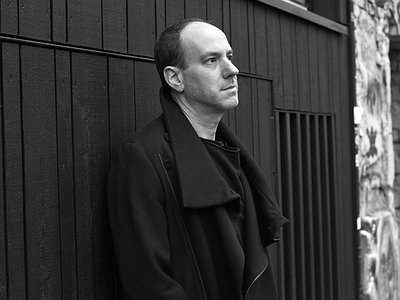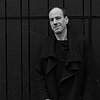Could you take me through the process of composing on the basis of one of your pieces that's particularly dear to you, please? Where did the ideas come from, how were they transformed in your mind, what did you start with and how do you refine these beginnings into the finished work of art?
My piece "La Quintina" came from a memory I had of an ethnomusicologist speaking back when I was in school about this very strange tradition of four-part vocal polyphony in Sardinia where singers attempt to create an illusory fifth voice. In that repertoire, the singers’ use excellent intonation, careful shaping of vowels, and the acoustics of resonant churches to trick our auditory processing system and create this ‘virtual’ voice.
They call this vaguely feminine phantom voice la quintina, the fifth part, and they think of it as the Virgin Mary singing along with them. I’ve been obsessed for a number of years with sounds and situations that are somehow both real and unreal, so the metaphor from this music was deeply attractive. But I didn’t want to just copy this special thing that already exists, so I ended up deciding to write a piece for string quartet instead of vocal quartet. This way, direct imitation wouldn’t even be an option. Since strings can’t control their timbral properties in the way voices can, I made the piece for quartet with live electronics.
To help generate an acoustic space in which this could happen, the live string quartet must disappear and merge into a larger virtual space as part of a new quintet. So, for almost the entire work, the quartet uses lead practice mutes that make the live acoustic sound of the group extremely faint. Though they can hear themselves, their sound is far softer than the projected, transformed image of the quartet that emerges from the speakers around the hall.
Initially, the string quartet’s parts combine so as to produce the phantom tones mostly acoustically, aided only by reverberation and filtering. However, as the piece progresses, the electronics begin to generate full parts in these ghost voices, built from bits and pieces of the quartet’s shared partials through more intense filtering and analysis/synthesis techniques.
With the electronics, these voices are able to take on much more presence and autonomy than the vocal quintina voices while still preserving the essentially ephemeral nature of these extended voices. For me the piece was all about creating a sort of world where everything seems unreal, but the effect that music has on you is all the more real for the strangeness of the situation.
In a piece like this, going from concept to realisation required a lot of steps and help. The piece was a co-realisation between the ExperimentalStudio in Freiburg and IRCAM. The initial research phase of research took place at IRCAM in Paris and it involved the testing of various methods for generating these quintina voices. At IRCAM, we explored simple techniques like filtering as well as more subtle analysis/resynthesis strategies that alter the components of the quartet’s sound in ways that fracture the gestalt of their timbre, causing the extra voice to emerge.
This Sardinian vocal tradition takes place in very particular sort of church and the acoustic of this space plays a big role in creating the quintina. Thus, the other large component of the work was to integrate both the live quartet and the virtual voices into a larger virtual space where all the sounds become slightly de-physicalized collaborators in a new synthesis. For this part of the work, we took advantage of the Experimental Studio’s experience in creating gripping, complex diffusion environments.
I also had to come up with harmonic models for the kinds of sounds that would lend themselves to generating these phantom voices and then find ways to shape them into the piece. I did a lot of this with computer-assisted-composition tools I made in OpenMusic. All through the process we would run sort of experiments, sometimes with sampled sound sources, sometimes by bringing in a live quartet to see if everything was coming together in the way we wanted it to. The first third of the piece was done first so we could test everything with a live group in Freiburg, then I went back and revised that and wrote the rest.
Finally, when it was all done, I spent several weeks refining the parameters of the processing to enhance the effect and to prevent the feedback which is a huge problem when the live sound is so much quieter than the transformed sound.
How do you make use of technology? In terms of the feedback mechanism between technology and creativity, what do humans excel at, what do machines excel at?
I use machines at almost all stages of my process except the very beginning. I was super-lucky to get involved with a group of people developing some of the first environments for computer assisted musical composition. Our goal was to have a sort of intelligent musical sketch pad, where you could quickly jot down ideas, even if the ideas involved some fairly heavy calculations ‘under the surface.’ Over time these tools have been extended to let me model almost all aspects of the composition, so I can build elaborate materials and forms while still being able to constantly test and tweak ‘by ear.’
In my normal process, I have score paper and sketch pads on my table, quarter-tone keyboards to play things off to one side, and my computer assistance environment open on the computer at the back of the table so I can seamlessly move between modes of engagement depending on what I am trying to make or evaluate. For me, this kind of set up leaves me feeling really free, the computer does the calculational stuff and leaves me mostly free to think, listen and experiment.
Collaborations can take on many forms. What role do they play in your approach and what are your preferred ways of engaging with other creatives, including the artists performing your work?
Other than when I am sitting and thinking about what to do, the work of other people is always there for me even when I am alone in a room. Composing can be extremely solitary but in truth it is continuously connected to the outside world.
I’ve been very lucky to have the chance to collaborate with an amazing group of people ranging from instrumentalists to sound engineers and scientists. And I learned the most important lessons about composing in rehearsals with the amazing instrumentalists I have been able to work with over the years.
Learning to trust others has been a huge growth process for someone like me who started out as a total control freak. Creation is not like practicing an instrument alone in a room when you are a kid. My collaborators have really helped me learn that letting go will often get me closer to my initial vision than trying to micromanage and decide everything.





